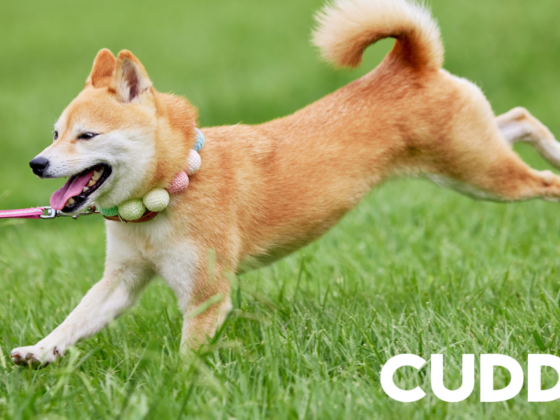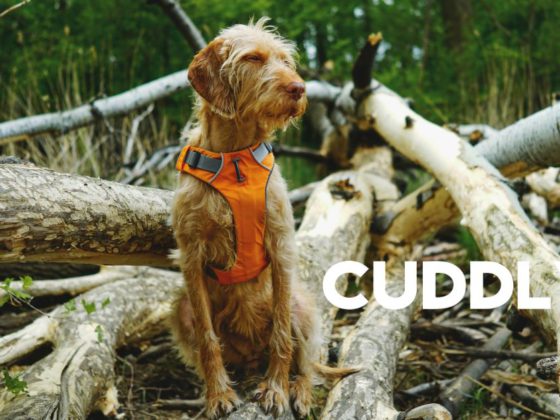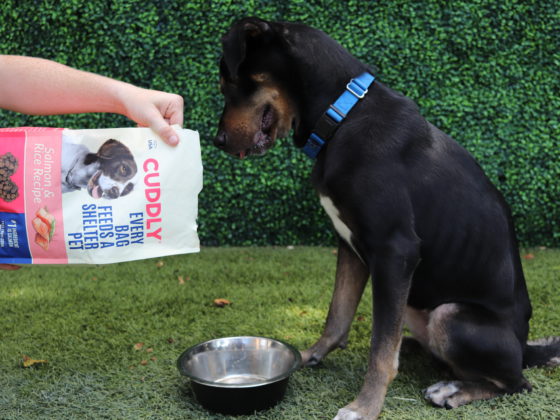You did it! You decided to adopt a rescue dog, and that is awesome, so now what? A system has been developed to ease your dog into their new home.
This process is the 3-3-3 rule (also known as the Rule of Threes) and can make an immense difference in how your new loved one starts life with their new family. Rescuers created the system to help new owners better understand the post-shelter decompression process their four-legged pal will experience through the first 3 days, 3 weeks, and 3 months once in their new sanctuary.
Of course, every dog is unique and adapts differently to the system, so it is important to be patient and understanding and give them plenty of space to grow and adjust at their own pace.
3 Days
In those first 3 days, it is crucial to remember how vulnerable and overwhelmed your dog will feel, act, and appear at this time and this is all completely normal.
- Your dog may feel a little overwhelmed, scared, uncertain, and might be wondering what is going on right now.
- Their real dog personality will not come out just yet, that personality is still acclimating to its new world and may not show for weeks.
- Feeding may be difficult too, as they may not feel comfortable enough to eat or drink, and may even diarrhea or vomit.
- Sad, seemingly beatdown, or fatigued from the shock of all the change and may want to chill under a table or curl up in their crate for a little personal time.
- Your new dog may test your boundaries at first, see what they can and can’t do, and learn how this new person in their life is going to react when they do certain things.
3 weeks
By week 3, your dog should be settling in and appearing to be a bit more comfortable with their new home, as well as signs of them realizing that this is their new home.
The environment you introduced to them will be more familiar and the routine you and your pal have been patiently working on is starting to become just that, a routine. Something that makes them secure because they know what is expected of them more and more each day.
This is such a fun time because your dog’s real personality might start coming through. However, the relaxation of being comfortable in the new space may also bring rise to some behavioral issues that may need addressing.
3 months
At 3 months, your rescue should be close to or used to their new home. Even more, the two of you have entered a relationship of trust, and a secure bond has set. This is the dog’s new home and they are secure in knowing their routine.
Decompression Preparation
Whether you live in a house or apartment, be sure to take a good walk through it and look for any items that might be alluring to a dog. Food, clothing, shoes, and exposed wires are all items a dog may touch and be harmful to them.
This process is quite like baby-proofing a home for a human child. By removing the item, the desire or temptation to chew, eat, or mess with something that it should not is also removed, as well as the need to discipline or correct them at this fragile stage in their development.
Crate Training
Yes, a crate is technically a cage, but it is open and can be an excellent device that allows your dog a personal, quiet space to go and decompress. The crate will soon represent a haven of rest and ease when everything is still new and different.
A crate should be a tool at first and once your rescue is feeling comfortable in their new home, it is up to you to determine how much it is used moving forward. The crate method is useful when your dog first takes residence and will make the transition much smoother.
Not every dog will take to a crate, but, you can assign an area in your home as a designated (safe) “chill zone.” Building independence early is crucial and aids in possible separation anxiety that may occur once the bond grows between dog and owner.
Property Check
Make sure to give the outside of your home a good walk-through, especially if your dog lives in or spends time in a yard. Take this time to preemptively seek out spots where your rescue might get out and into danger, any escape openings, holes, etc. Use this time to reinsure latches on gates or doors and remove any harmful debris.
The Dog Necessities
It is time to hit the pet store and get some goodies! Your new ball of joy is going to need some items before they get to their new home: water and food bowl, leash, collar, products, and toys!
Researching and deciding which food brand and product (ingredients) are best for your dog will take a little trial and error. There are great dog food suggestions, however it is important to remember that every dog has different needs, possible food allergies, autoimmune conditions, etc., which can cause reactions and pose problems, getting the right mix can make a big difference in your dog’s healthy lifestyle.
Reflection Before Adoption
Building a good relationship early on with your new friend is crucial, and whether you have a dog already or not, researching and understanding and utilizing the many different resources and guidelines on rescues before they arrive is important. Doing so will help to understand what to expect and how to better communicate, and the payoff down the road as far as rewards, reinforcement, and identifying your dog’s behavior plus your ability to properly correct it.
It is time to bring them home to become a welcomed and loved part of your family, wait, remember, part of the plan is a calm demeanor. This is ideal for doggy’s first moments in your domicile and setting the right tone when getting your relationship started.
As difficult as it may sound, this tone, this healthy energy, this “you,” must continue for the next 3 months, and so on. Of course, there can still be those fun moments of love and excitement with your pet during this time, yet it is best to do your best to hold back and use these emotions toward your dog’s acclimation process.
Take a Stroll Together Outside First
You are home with your new dog but before you go inside, take them on a nice walk (leash on) around the neighborhood, it will let them use up some of that extra energy. Even more, this helps to establish boundaries in your future relationship, like listening and how to walk with you, and a sense of their new environment, area, the sights, sounds, smells, etc.
If there are leash issues, it is a good idea to seek out a credible training tool or manual. Fixing the bad habits early on will help to build new, good ones. Moreover, once you establish a proper leash rapport with your four-legged friend, the gentle leader will no longer be needed, and you can return to a good, old-fashioned collar.
Introducing Rescue to Their New Home
The walk is over, and everyone’s a little calmer, so it’s time to go inside. Keep the leash on at first, as they need to continue following and to prevent them from wandering or sniffing around. This is crucial in giving the dog a sense of who is in charge, who runs this house, is the proverbial “leader of the pack.”
As much as it may be tempting to let them roam the place, the leash keeps them close to you and avoids sending the wrong message. Also, it enables you to bring them to each room in the home, piece by piece…slowly. (Please note, make sure you enter and leave first, this helps establish trust in leadership and gets them to follow your lead). When the home tour is complete, move on to the patio, yard, perimeter, etc.
Again, as difficult as it is to ignore your new precious pal during the first 3 days, it is important to do this process while not talking, petting, or making eye contact. The dog is beyond overstimulated at this initial stage, thus the less stimulation, the easier it is for your dog to focus during the process. You are the tour guide, maintaining your calm as you show the four-legged newbie the lay of the land, reinforces who is in charge and helps them stay on task.
Meeting the Other Pets
If you have other pets in the home, it is best to keep the new furry friends separate for 24 hours. It is a high-stress time and could exacerbate that already existing stress, which may cause a fight. Yes, we all think that we have the nicest dog in the world, but they may be territorial with a new dog.Introducing dogs casually at the dog park versus home will give them a chance to get used to each other.
When it is time to introduce your rescue to the other pets, outside is a preferred spot. Maybe a long walk with both before making that initial pass through the house’s threshold together. As for a cat, it’s kind of up to the cat how it wants to meet the dog; keeping a gate so it can get away if it wants to, is a good idea, as well.
Your rescue might be experiencing a lot of things for the first time, things we are used to, such as children, stairs, TV, speakers, etc., may be all somewhat new. Thus, please remember to be patient and understanding as your new friend gets used to all the new things in their life, so they eventually realize that there is nothing to fear.
Setting Boundaries
The welcome home tour is over, and it is now time to start setting some simple boundaries. The leash is on, bring them to their eating area, show them where they can get some water and possibly a few treats. Doing this will help establish a routine feeding time and get them more familiar with what will become a popular area.
The food hookup is now known, now it is time to move on to their sleeping area. Let them sniff around and get a good, comfortable sense of the crate. Let them smell it, mull around in it, just let them have an all-out research party inside. It is okay to toss or put some treats in the crate to entice them in and let them get more comfortable with the space. Some dogs walk right in with ease, while others might take a little bit longer. Either way, once happily in, it is okay to remove the leash as well as shut the door. They will use this quality time to further decompress, however, if they seem stressed or anxious by closing the door, then simply leave it open and allow them to go in and out as they please.
If you have chosen not to go the crate-training route, let them off the leash and let them investigate their sleeping quarter. When you take off the leash in their room, if you will, you are letting them know this is theirs, it belongs to them. They might just decide to chill here and not worry about the rest of the family for a bit. This is a great sign. It means your introduction process was a success and they have found their station in the “pack.”
By now, your dog has a good sense of its new home and its boundaries. Try to limit how much freedom they are allowed the first few days; this can be achieved by closing some doors or just making some of the rooms in the house as “no dogs allowed!” And keep that relaxed environment going, stay calm, try to repress those feelings to overwhelm your new loved one with attention and affection (as hard as that is to do). If you feel they are itching for some attention, of course, give it, but remember to minimize it at this stage (want to limit separation anxiety).
It is work, emotionally and physically, especially at this juncture, because your rescue dog is still adjusting to its new home. As the airlines always say before takeoff, please remain calm, and in your dog’s situation, this is to instill in them that this is your house, and you are the rule-maker. If they do something good during these first three days, then rush to reward as it will send a message that will reverberate down the road.
Routine, Routine, Routine
Establishing a daily routine with your dog during the first 3 days, when they may not be eating or drinking much, acting a little off, or still just acclimating to their new home, is crucial. A routine is a good way for your dog to understand what to expect, what is coming, and this is a great tool in limiting unnecessary stress or anxiety.
Here are a few daily steps to help you and your rescue get started (repeat 3 times daily where applicable).
- Start your day and then start your dog’s day. Your thing must come first, and then even if the dog is first to wake and comes to you, you decide when it is time to begin the day.
- Get out and go for a walk on your terms with you leading, preventing them from tugging or pulling ahead.
- Try out some simple commands. Do this for about five minutes, such as sit, come, wait, etc.
- Give them their food but make them listen and wait before they can start, if able. Do the same with treats if it is afternoon.
- Remember, after a walk is a good time for more training, and then something to eat is a good way to show that growing love.
- Also, as hard as it is to do this, you should ignore your furry buddy at this time, be it in the a.m. when you go to work or in the evening when you come back. Offering a hearty hello or goodbye will most certainly get the dog excited, and separation anxiety will increase rather than do the opposite. As difficult and heartbreaking as this may become, it will benefit the dog down the road.
The 3-3-3 Decompression Rule is a great way to begin your journey with your new rescue.By following the steps and suggestions above, your four-legged friend will have a great chance of starting in their new home successfully.
It takes work, time, and patience, but there are rewards, and it is a positive way to introduce your dog to its new happy home and limits the issues that could arise during decompression.
Finding the Right (Rescued) Breed














2 comments
фильмы смотреть
I have read your article carefully and I agree with you very much. This has provided a great help for my thesis writing, and I will seriously improve it. However, I don’t know much about a certain place. Can you help me? https://www.gate.io/pt-br/signup/XwNAU
Comments are closed.